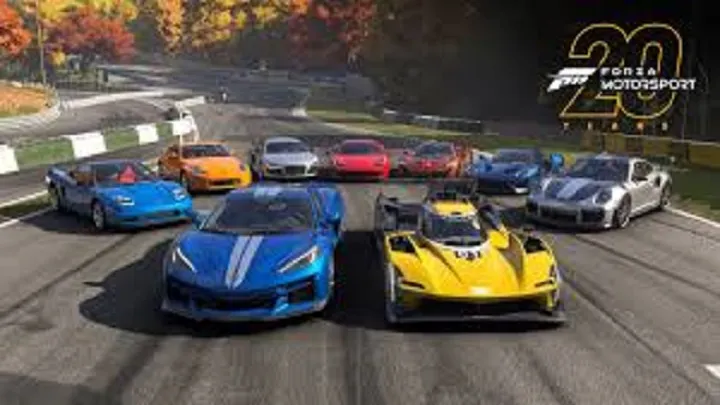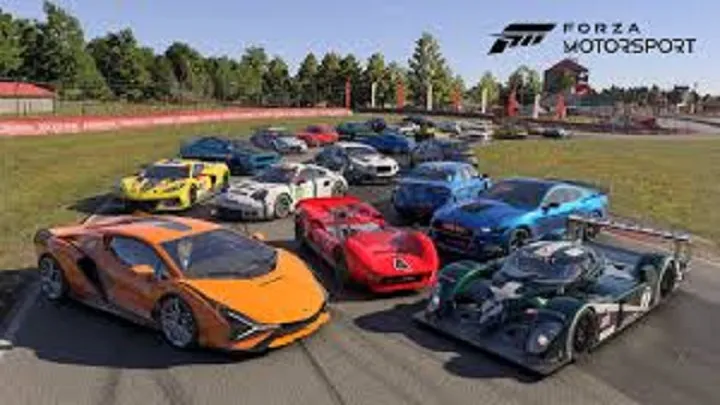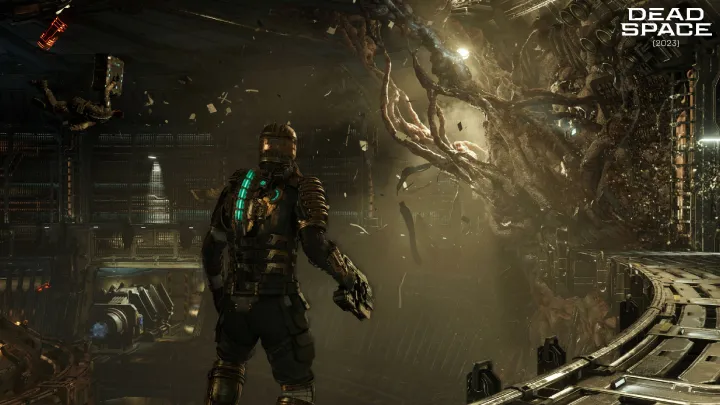Introduction
Forza Motorsport has long stood as one of the most polished and ambitious racing simulators in the gaming industry. Developed by Turn 10 Studios, it has consistently pushed the boundaries of realism through advanced physics, stunning visuals, and meticulously detailed cars. Yet beneath its excellence lies a persistent tension: balancing realism with accessibility. While hardcore sim racers crave authenticity that mirrors real-life motorsport, casual players often seek approachable fun without overwhelming complexity. This balance defines Forza Motorsport’s identity and influences how it competes with rivals like Gran Turismo and Assetto Corsa.
In this article, we will explore the issue of realism versus accessibility in Forza Motorsport, examining how it affects the player experience across progression, car handling, multiplayer, and community perception. The tension is not just a gameplay matter—it is a philosophical one that determines whether the game is a simulation, an experience, or both.
The Legacy of Realism in Forza Motorsport
From its earliest entries, Forza Motorsport has marketed itself as a “racing simulator for everyone.” Its appeal lies in how it combines deep realism with adjustable assists. Players can experience near-professional driving physics but also enable tools like braking lines, traction control, and auto-shifting.
This legacy creates a double-edged sword. On one hand, it attracts a broad audience by making the game less intimidating. On the other, it creates skepticism from sim purists who compare it unfavorably with niche titles that go all-in on realism.
The latest Forza Motorsport doubles down on realism with improved tire models, dynamic weather, and advanced car behavior. But does this push casual players away? That question defines much of the community debate.
The Entry Barrier: First Hours Behind the Wheel
The first hours in Forza Motorsport are crucial. Unlike arcade racers such as Need for Speed, Forza requires players to adjust to realistic braking, acceleration, and cornering. For new players, this transition can be punishing.
Early tutorials attempt to ease the experience by offering optional assists and difficulty settings. Yet even with these, beginners often feel overwhelmed by complex terminology, tuning systems, and competitive AI. The danger here is alienation: players who expect instant thrills may abandon the game before discovering its depth.

Forza Motorsport attempts to solve this with gradual onboarding, but the tension remains. Too easy, and veterans complain. Too hard, and newcomers leave.
Car Handling: Precision or Accessibility?
Car handling is at the core of the realism-accessibility debate. Forza Motorsport prides itself on simulating tire grip, suspension, weight transfer, and aerodynamics. Small mistakes in throttle control or braking can drastically affect lap times.
For accessibility, assists exist. Features like stability management or automatic braking help newcomers but also dilute the sense of control. Purists argue that these systems create “false learning,” preventing players from mastering real driving techniques.
H3: The risk of over-simplification
If assists make driving too forgiving, players may not feel the satisfaction of true mastery. The thrill of shaving seconds off lap times comes from precision, not automation.
H3: The risk of overwhelming players
On the flip side, raw simulation without assists alienates casual players who just want to enjoy cars and tracks without weeks of practice. The balance here is fragile.
Career Mode Progression: Realistic or Restrictive?
Progression in Forza Motorsport has always been tied to car collection, upgrades, and competition. The newest game adds even more depth with wear systems, car mastery, and resource management.
For hardcore players, this enhances immersion. Cars feel like assets you nurture over time. However, casual players often find these systems restrictive, as they require grinding to unlock vehicles and upgrades.
H4: Realism-driven progression
- Cars must be earned through dedication.
- Performance tuning feels authentic.
- Every upgrade changes car behavior significantly.
H4: Accessibility-driven progression
- Players want quick access to favorite cars.
- Grinding discourages casual sessions.
- Unlocking barriers risk turning fun into frustration.
This issue reflects the larger conflict: does Forza Motorsport want to simulate a career in motorsport or provide a sandbox of automotive enjoyment?
Multiplayer: Simulation Meets Chaos
Forza Motorsport’s multiplayer scene showcases the realism-accessibility divide most clearly. On one side are competitive sim racers who demand clean, authentic races. On the other are casual players who treat multiplayer like bumper cars.
The result? Chaos. Even with penalties for reckless driving, multiplayer lobbies often descend into crashes and frustration. For serious players, this ruins the simulation experience. For casuals, strict penalties feel oppressive.
Some community solutions include league systems that separate skill levels, but even then, accessibility clashes with realism. How do you ensure fair competition without scaring away casual players who may never reach “serious” standards?
Tuning and Customization: Depth or Confusion?
Forza Motorsport offers extensive tuning: gear ratios, tire pressures, suspension angles, and more. To sim enthusiasts, this is a dream. To newcomers, it’s a nightmare of numbers.
H3: For enthusiasts
Tuning allows creative problem-solving. Adjustments lead to real performance differences, mimicking real-world motorsport engineering.
H3: For newcomers
The sheer complexity discourages experimentation. Many rely on default setups, missing out on a core part of the game.
The developers attempt to balance this by offering presets and explanations, but the gap between expert and casual understanding remains vast.
AI and Difficulty Scaling
AI opponents are central to career races. In Forza Motorsport, AI can range from forgiving to nearly superhuman. Difficulty settings try to accommodate all players, but the balance often feels uneven.
Casual players may dominate early races even on higher difficulties, then suddenly hit brick walls when AI scaling spikes. Hardcore players, meanwhile, find AI too predictable and unrealistic compared to human behavior.
Issues with AI difficulty:
- Inconsistent challenge across tracks.
- AI rubber-banding creates artificial tension.
- Lack of adaptive systems for different player styles.
AI represents another area where realism collides with accessibility. Perfectly realistic AI may frustrate; forgiving AI breaks immersion.
Visual Realism and Performance Trade-Offs
Realism isn’t limited to physics—it extends to visuals. Forza Motorsport’s commitment to lifelike graphics raises another accessibility issue: performance requirements.
Players on high-end PCs or next-gen consoles experience breathtaking detail, while others face technical limitations. Lower frame rates or visual downgrades harm immersion and accessibility.
This creates a technological divide. Hardcore players invest in powerful rigs to enjoy realism at its fullest. Casuals may feel left behind, unable to afford the hardware necessary for the “true” experience.
Community Division: Two Audiences, One Game
Perhaps the most profound issue is community division. Forza Motorsport tries to satisfy two distinct groups—sim purists and casual players—but often ends up pleasing neither completely.
Purists criticize its assists and progression systems, arguing they dilute realism compared to niche sims. Casual players complain about steep learning curves, grinding, and punishing mechanics.
This split fuels debates in forums and communities, shaping how the game is perceived. Forza Motorsport is caught between two identities: accessible racing fun and serious simulation.
The Future: Can Balance Be Achieved?
Looking forward, Forza Motorsport faces a fundamental question: can it truly satisfy both audiences? Solutions may lie in modular design, where players choose between different “modes” tailored to their playstyle.

Potential solutions include:
- Separate career paths for casual and hardcore players.
- Smarter AI scaling that adapts dynamically.
- More intuitive tuning systems with layered complexity.
- Multiplayer leagues with clearer distinctions between casual and competitive.
The future of Forza Motorsport depends on whether Turn 10 can bridge the gap between realism and accessibility without compromising either.
Conclusion
Forza Motorsport’s greatest strength—its commitment to realism—also creates its greatest challenge: accessibility. The balance between authenticity and approachability defines the player experience, from car handling to career progression. While the game succeeds in many areas, the tension between audiences remains unresolved.
Ultimately, the struggle between realism and accessibility is not just a design issue—it is Forza Motorsport’s identity. Whether it leans toward simulation or entertainment will shape its legacy in the racing genre.

















